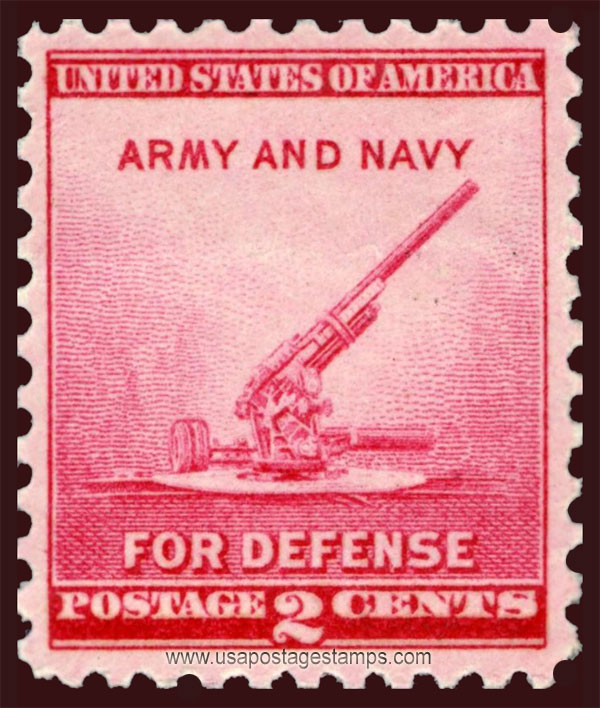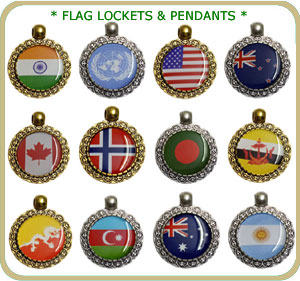US 1940 National Defense Issue 'Anti-aircraft Gun' 2c. Scott. 900

Series: National Defense Issue
Stamp details: 90-millimeter Anti-aircraft Gun
Issued date: 16-10-1940 (dd/mm/yyyy)
Face value: 2c.
Emission: Commemorative
Watermark: No Watermark
Catalogue No:-
Scott (USA): 900
Stanley Gibbons (UK): 897
Michel (Germany): 496
Yvert et Tellier (France): 452
Dimensions (height x width):
25mm x 22mm
Printer: Bureau of Engraving and Printing
Print Method: Rotary Press
Stamp Colors: Pink carmine
Perforation: Perf 11 x 10½
Themes: Army, Weapons, Artillery
Total print: 5,211,708,300 (estimate)
Stamp details: 90-millimeter Anti-aircraft Gun
Issued date: 16-10-1940 (dd/mm/yyyy)
Face value: 2c.
Emission: Commemorative
Watermark: No Watermark
Catalogue No:-
Scott (USA): 900
Stanley Gibbons (UK): 897
Michel (Germany): 496
Yvert et Tellier (France): 452
Dimensions (height x width):
25mm x 22mm
Printer: Bureau of Engraving and Printing
Print Method: Rotary Press
Stamp Colors: Pink carmine
Perforation: Perf 11 x 10½
Themes: Army, Weapons, Artillery
Total print: 5,211,708,300 (estimate)
Description:- The 90 mm gun M1/M2/M3 was an American heavy anti-aircraft and anti-tank gun, playing a role similar to the German 8.8cm Flak 18. It had a 3.5 in (90 mm) diameter bore, and a 50 caliber barrel, giving it a length of 15 ft (4.6 m). It was capable of firing a 3.5 in × 23.6 in (90 mm × 600 mm) shell 62,474 ft (19,042 m) horizontally, or a maximum altitude of 43,500 ft (13,300 m).
The 90 mm gun was the US Army's primary heavy anti-aircraft gun from just prior to the opening of World War II into 1946, complemented by small numbers of the much larger 120 mm M1 gun. Both were widely deployed in the United States postwar as the Cold War presented a perceived threat from Soviet bombers. The anti-aircraft guns were phased out in the middle 1950s as their role was taken over by surface-to-air missiles such as the MIM-3 Nike Ajax.
As a tank gun it was the main weapon of the M36 tank destroyer and M26 Pershing tank, as well as a number of post-war tanks like the M56 Scorpion. It was also briefly deployed from 1943–1946 as a coast defense weapon with the United States Army Coast Artillery Corps. Each gun cost roughly $50,000 to make in 1940 and utilized up to 30 separate contractors to manufacture.
Source: en.wikipedia.org/wiki/90_mm_gun_M1/M2/M3
The 90 mm gun was the US Army's primary heavy anti-aircraft gun from just prior to the opening of World War II into 1946, complemented by small numbers of the much larger 120 mm M1 gun. Both were widely deployed in the United States postwar as the Cold War presented a perceived threat from Soviet bombers. The anti-aircraft guns were phased out in the middle 1950s as their role was taken over by surface-to-air missiles such as the MIM-3 Nike Ajax.
As a tank gun it was the main weapon of the M36 tank destroyer and M26 Pershing tank, as well as a number of post-war tanks like the M56 Scorpion. It was also briefly deployed from 1943–1946 as a coast defense weapon with the United States Army Coast Artillery Corps. Each gun cost roughly $50,000 to make in 1940 and utilized up to 30 separate contractors to manufacture.
Source: en.wikipedia.org/wiki/90_mm_gun_M1/M2/M3




